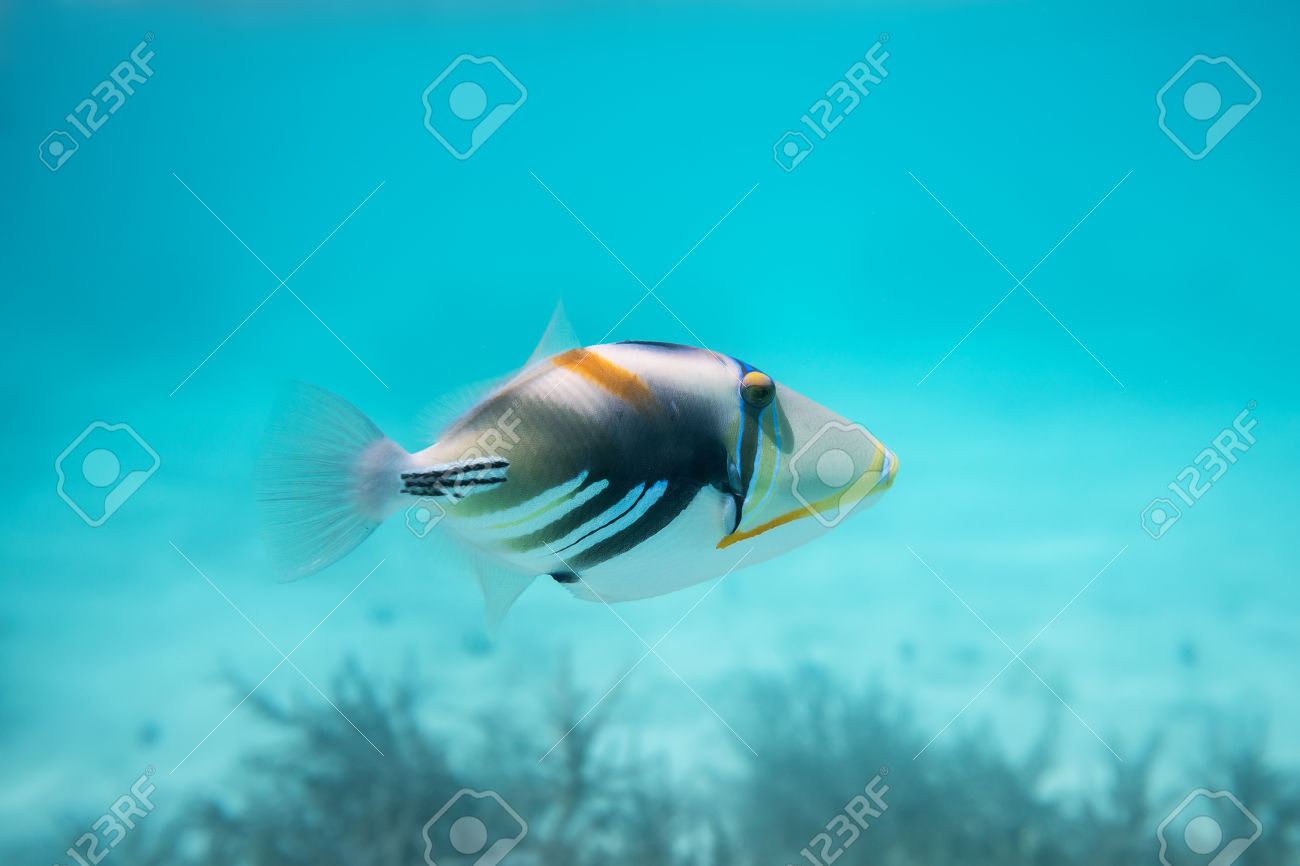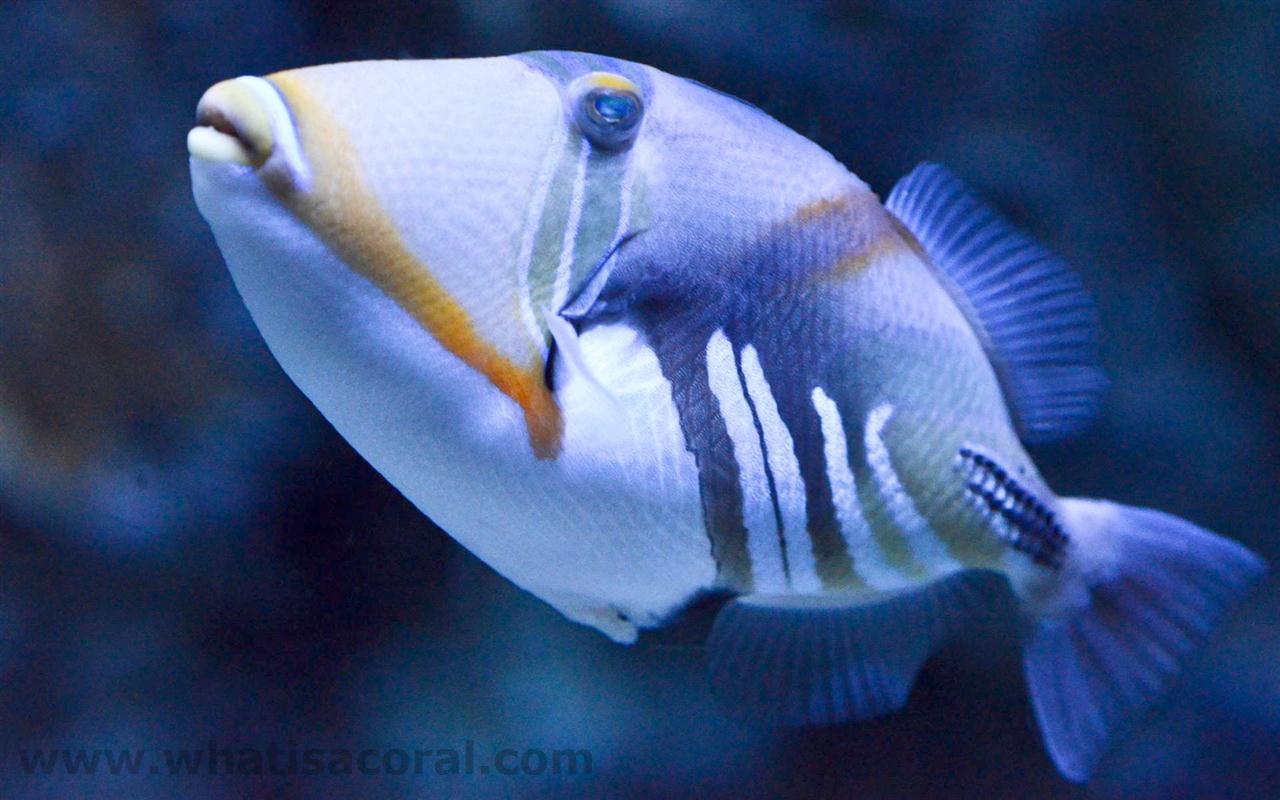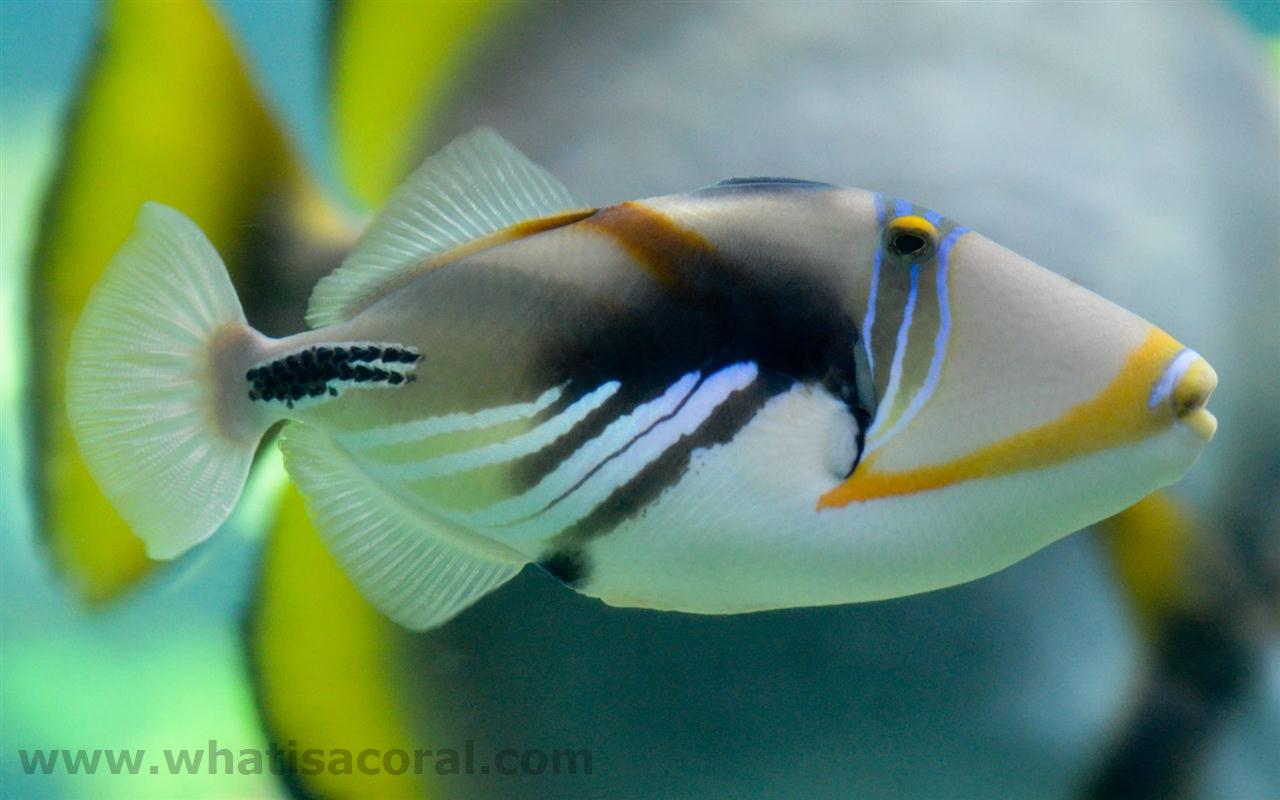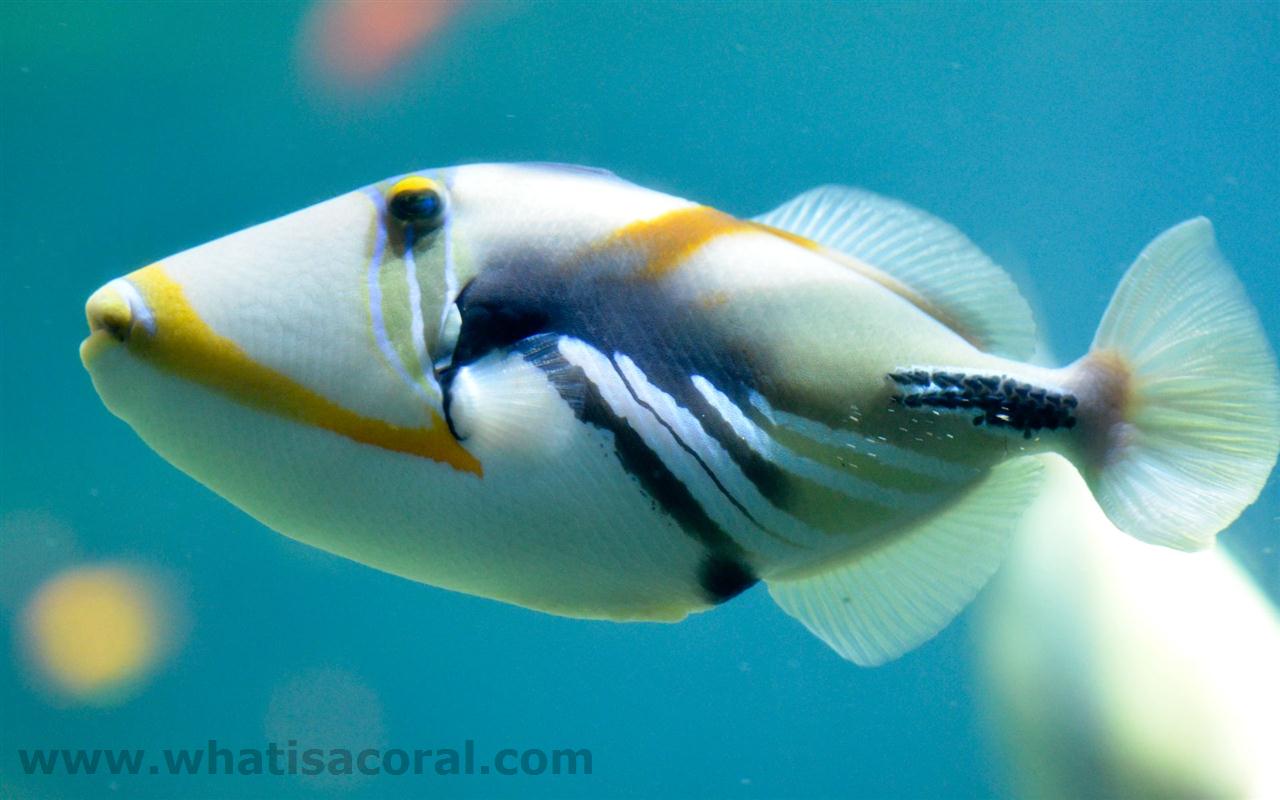
Rhinecanthus aculeatus
FAMILY
Balistidae
TAXONOMY
Rhinecanthus aculeatus Linnaeus, 1758, India.
OTHER COMMON NAMES
English: Picassofish; English and Hawaiian: Humu humu;
French: Poisson picasso sombre; German: Gemeiner Picassodrьcker.
PHYSICAL CHARACTERISTICS
Body compressed and somewhat oblong or rhomboid. The
forehead slopes upward past the eye to just anterior to the dorsal
fin. There are three spines and 23–26 soft rays in the dorsal
fin and 21–23 soft rays in the anal fin. The color pattern is
gray to grayish brown on the head and just below the dorsal
fin and brown to brownish gray along the upper flank, with
two thick and two thin oblique stripes of the same color extending
down, in alternation, onto the lower flank and belly.
An orangish brown bar extends from midflank up and back to
the base of the soft rays of the dorsal fin. The lower flank and
belly are white. A thin yellowish line runs from the mouth
back to just past the lower part of the operculum. There is a
black to brown blotch extending from the posterior portion of
the flank onto the white caudal peduncle and a black blotch
around the anus. The fins are pale to light gray. Reaches 11.8
in (30 cm) in total length.
DISTRIBUTION
Tropical and subtropical Indo-West Pacific from the Red Sea
and East Africa; south to South Africa; east to the Tuamotu
Archipelago, Marquesas, and Hawaiian Islands in Polynesia;
south to northern Australia and Lord Howe Island; and north
to southern Japan. Also reported from the eastern Atlantic
from Senegal south to South Africa.
HABITAT
Coral and rocky reefs, mainly on reef flats or in shallow
lagoons on rubble and sand. Depth range is 3.3–13 ft
(1–4 m).
BEHAVIOR
Highly territorial, especially when guarding a nest. Excavates
or utilizes a small hole for shelter, where it can lock itself in
by extending its first dorsal spine. It sleeps on its side there.
Patrols a territory and may inflict a painful bite upon
intruders or passersby. Produces a whirring sound when
alarmed.
FEEDING ECOLOGY AND DIET
Omnivorous. Feeds upon mollusks, crustaceans, worms, sea
urchins, corals, small fishes, tunicates, foramniferans, fish eggs,
algae, and detritus.
REPRODUCTIVE BIOLOGY
The mating system is single male/multiple female polygyny,
but facultative monogamy occurs occasionally. Spawning takes
place on a semilunar cycle. Spawning is paired, and eggs are
deposited on the substratum within a territory. The eggs are
demersal and guarded. The larvae are pelagic.
CONSERVATION STATUS
Not listed by the IUCN.
SIGNIFICANCE TO HUMANS
An important fish in the aquarium trade but also taken as food
in minor commercial and subsistence fisheries.
Other popular Animals
Photo Gallery of - Blackbar triggerfish





 Animalia Life
Animalia Life